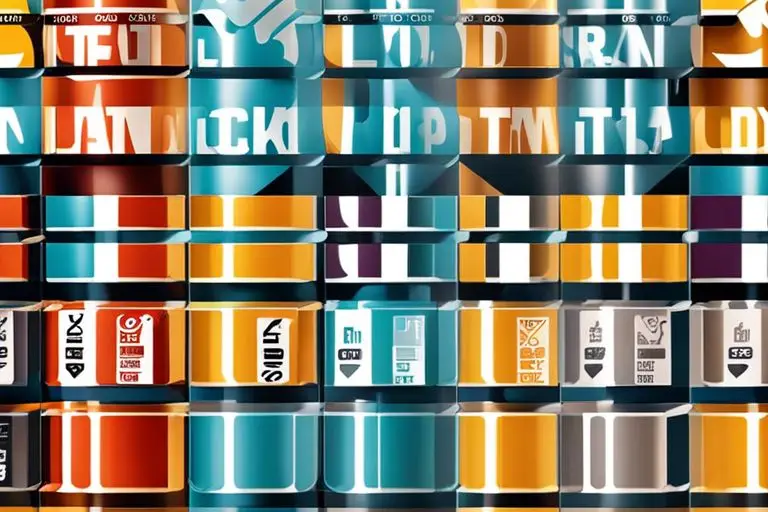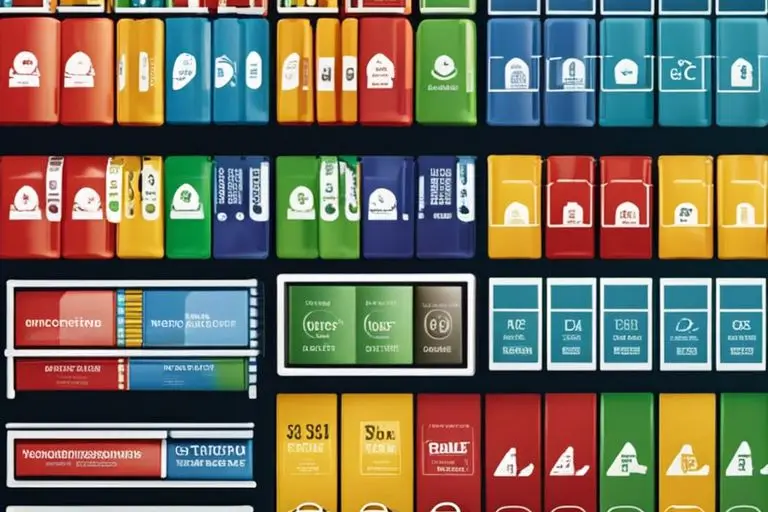It's crucial to understand the different classifications of plastic in order to effectively reduce your plastic consumption. By gaining insight into which types of plastic are the most environmentally harmful and which ones are easier to recycle, you can make informed choices that will have a significant impact on reducing plastic waste. Through this knowledge, you can take steps towards a more sustainable lifestyle and contribute to protecting our planet for future generations.

Key Takeaways:
- Understanding the different classifications of plastic can help you make more informed decisions about which products to avoid and reduce your overall plastic consumption.
- Learning about the recycling codes can guide you in properly disposing of plastic items and choosing more sustainable alternatives when possible.
- Being aware of the environmental impact of plastics can motivate you to actively seek out ways to minimize plastic usage in your daily life, contributing to a healthier planet for future generations.
Understanding Plastic Classifications
There's a growing concern about the environmental impact of plastic consumption. If you want to reduce your plastic usage, understanding the different classifications of plastics is key. For a comprehensive guide on quitting plastic, check out How to Quit Plastic.
The Different Types of Plastics
Different types of plastics are classified based on their resin identification code (RIC), a number from 1 to 7 that indicates the type of plastic used. Each type has its characteristics and uses, ranging from polyethylene terephthalate (PET) commonly found in beverage bottles to polystyrene (PS) used in disposable foam packaging. Understanding these classifications can help you make informed decisions about your plastic consumption practices.
| RIC Number | Type of Plastic |
| 1 | PET (Polyethylene Terephthalate) |
| 2 | HDPE (High-Density Polyethylene) |
| 3 | PVC (Polyvinyl Chloride) |
| 4 | LDPE (Low-Density Polyethylene) |
| 5 | PP (Polypropylene) |
After understanding the different types of plastics, you can make more conscious choices to reduce your plastic consumption.
How Plastic Types Relate to Recyclability and Consumption
Types of plastics also play a crucial role in recyclability and consumption patterns. Certain plastics like PET and HDPE are more widely accepted for recycling due to their properties. On the other hand, plastics like PVC and PS can be harder to recycle and may end up in landfills or oceans, contributing to environmental pollution.
| Plastic Type | Recyclability |
| PET | Widely Recycled |
| HDPE | Commonly Recycled |
| PVC | Challenging to Recycle |
| PS | Difficult to Recycle |
| PP | Generally Recycled |
Any efforts to reduce plastic consumption should consider the recyclability and environmental impact of different plastic types. By choosing more recyclable plastics, you can contribute to a cleaner and greener future.

Practical Strategies for Reducing Plastic Use
Evaluating Your Plastic Footprint
Your first step in reducing plastic consumption is to evaluate your current plastic footprint. Take a closer look at your daily habits and pinpoint where you can make changes to reduce your plastic waste. To get started, check out these Tips to reduce your plastic waste - WWF-UK for guidance on assessing and reducing your plastic impact.
Tips for Reduction in Daily Life
The key to reducing plastic use in your daily life is to adopt small but impactful changes that collectively make a big difference. Start by carrying a reusable water bottle and coffee cup to avoid single-use plastic items. Opt for products with minimal or no packaging whenever possible, and say no to plastic straws and utensils. Perceiving your purchasing decisions through a sustainable lens can help you minimize your plastic consumption.
- Use reusable bags when shopping.
- Avoid purchasing products with excessive packaging.
- Choose glass or stainless steel containers over plastic ones.
For instance, bringing your own reusable bags to the grocery store not only reduces plastic waste but also lowers the demand for single-use plastics. By actively choosing products with eco-friendly packaging options and opting for durable alternatives to disposable plastic items, you can significantly reduce your plastic footprint. Perceiving your daily choices through an environmentally conscious perspective is crucial in minimizing plastic use.
Alternative Materials and Innovations
Biodegradable and Compostable Options
Many consumers are seeking biodegradable and compostable alternatives to traditional plastic products. These options break down naturally over time, reducing the environmental impact of plastic waste. Any products labeled as biodegradable should meet specific standards to ensure they break down efficiently in various environments. Compostable products, on the other hand, are designed to decompose into nutrient-rich soil, making them a sustainable choice for eco-conscious consumers.
Innovations in Plastic Substitutes and Recycling
Many companies and researchers are constantly exploring innovations in plastic substitutes and recycling technologies to reduce our reliance on traditional plastics. An exciting development is the creation of bioplastics, which are derived from renewable resources like corn starch or sugarcane. These materials have the potential to replace traditional plastics in various applications while being biodegradable or compostable. Additionally, advancements in recycling technologies are making it possible to efficiently recycle a wider range of plastics, reducing the amount of plastic ending up in landfills or oceans.
Another key innovation is the development of plant-based alternatives to single-use plastic items like straws and cutlery. These alternatives offer the convenience of plastic products without the environmental impact, as they are often biodegradable and compostable. By opting for these alternatives, consumers can significantly reduce their plastic consumption and contribute to a more sustainable future.
Community and Policy Actions
How Communities Can Make a Difference
After understanding the classifications of plastic and the impact of plastic consumption on the environment, communities can actively participate in reducing plastic usage. By organizing clean-up events, promoting recycling programs, and advocating for eco-friendly alternatives, communities can make a significant impact on reducing plastic pollution.
The Role of Public Policies and Regulations
Any effective reduction in plastic consumption requires the implementation of strong public policies and regulations. Governments play a crucial role in enforcing bans on single-use plastics, incentivizing businesses to adopt sustainable practices, and investing in waste management infrastructure. These policies can create a framework for a more sustainable future.
Difference: Public policies and regulations are imperative in creating a lasting impact on reducing plastic consumption. By enforcing strict regulations and promoting sustainable practices, governments can significantly reduce the environmental harm caused by plastic pollution. These actions are crucial in preserving our ecosystems and protecting human health from the dangers of plastic waste.
Summing up
To wrap up, understanding the classifications of plastics can greatly help in reducing your plastic consumption. By being aware of the different types of plastics and their properties, you can make more informed choices when selecting products and packaging. This knowledge empowers you to opt for alternatives that are more sustainable and eco-friendly, ultimately contributing to the reduction of plastic waste and its detrimental impact on the environment. It is necessary for individuals to take responsibility for their plastic consumption and make conscious efforts to minimize their use of single-use plastics, promoting a more sustainable lifestyle for the well-being of our planet.
FAQ
Q: What are the main classifications of plastics?
A: Plastics are classified into seven main categories, known as Resin Identification Codes (RIC), including PET (Polyethylene Terephthalate), HDPE (High-Density Polyethylene), PVC (Polyvinyl Chloride), LDPE (Low-Density Polyethylene), PP (Polypropylene), PS (Polystyrene), and Others.
Q: How can understanding plastic classifications help in reducing consumption?
A: By knowing the different types of plastics, consumers can make informed choices to reduce their plastic consumption. This includes selecting products with lower plastic content, avoiding single-use plastics, and opting for recyclable materials.
Q: What are some practical tips for reducing plastic consumption based on classifications?
A: To reduce plastic consumption, individuals can choose products packaged in PET, HDPE, or PP plastics as these are more widely accepted for recycling. Additionally, avoiding items made from PVC or polystyrene can help minimize plastic waste and environmental impact.
